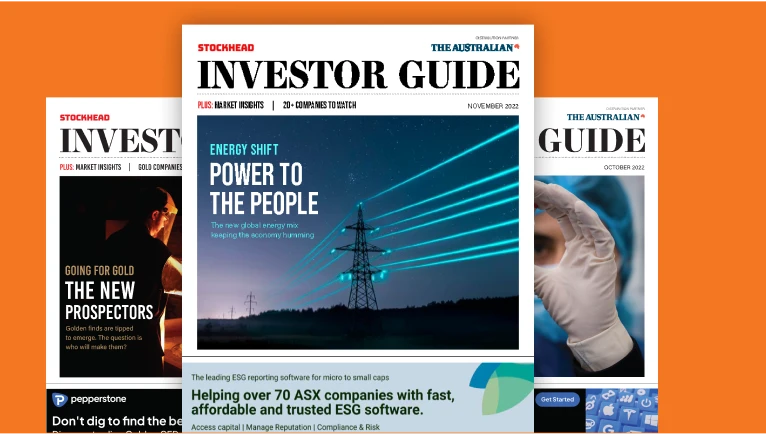Health Check: Biotechs canter into November, but the ‘favourites’ have lead in their saddlebags

Most punters won't pick this afternoon's magic unicorn. But will they better last the distance with emerging biotech smokies? Pic: Getty Images.
- Optiscan Imaging led the biotech pack in October, while some of the Big Four stocks were late scratchings
- Does CSL have an iron deficiency?
- Weebit Nano ‘mini me’ Dorsavi quietly jockeys for position in the high-stakes chip race
The ASX-listed life sciences sector galloped nicely in October, albeit weighed down by the performance of the ‘Big Four’ stocks.
On Biotech Daily’s reckoning the top 40 stocks gained an average 7.6% for the month, for a collective market capitalisation of $21.7 billion.
The broader ASX 200 index edged up 0.3% for the month, which makes biotech a clear short-priced outperformer.
However, the Top 40 excludes the Big Four biotechs: CSL (ASX:CSL), ResMed (ASX:RMD), Pro Medicus (ASX:PME) and Cochlear (ASX:COH)
These stocks tumbled 7.5% for a market cap of just under $191 billion – the first time below $200 billion since December 2023.
Sector stallion Pro Medicus looked more like a gelding, down 14%. Still, the stock has surged 33% over the last year and still is worth a heady $27 billion.
CSL shares lost 9% and is now worth a mere $87 billion (see below).
Cochlear bucked the trend with a 2.2% gain.
Of the top 40 stocks, imaging house Optiscan (ASX:OIL) led the way with a 40% gain.
Then followed Clarity Pharmaceuticals (ASX:CU6) (35.6%), which edged out Micro-X (ASX:MX1) (35.2%) by half a nose.
Race results highlight the nags that run fourth. We presume that’s just to show how painfully close punters with a place bet were to not losing their money.
We’ll follow suit: Starpharma (ASX:SPL) lumbered in fourth in the Biotech Derby, with a 34.6% gain.
At the other end of the field, MedAdvisor (ASX:MDR) led the falls with a painful 33% decline.
The company runs patient education campaigns for US Big Pharma. The stock’s not exactly in danger of being dealt with behind the green screen, but has been nobbled by the downturn in vaccinations.
‘Ponies’ position for the final furlong
Unlike the Nasdaq, the ASX doesn’t have a biotech index per se: it’s all wrapped up in the ASX 200 healthcare index.
This index fell 8% for the month, taking the year’s loss to 21%.
On Macquarie Equities’ sums, the ‘pharma and biotech’ constituents of the ASX 300 declined 7.7% for the month. Over the year they have tumbled 34%.
‘Healthcare equipment and services’ stocks fell 1% and eked out a 4.7% gain for the year.
The numbers show the mid to late stage developers have the inside running on a wet track.
With judicious use of the whip, experienced management teams should jockey a few more down the final furlong.
Macquarie, by the way, notes that November has been the best month for both the local and US markets generally over the last decade.
These markets have gained an average 3% and 4.4% respectively.
So for penniless punters after the last race at Flemington, there’s an alternative to turning to the dogs and trots to chase their losses.
Here’s a roughie
Pitt Street Research believes the $50 million Dorsavi (ASX:DVL) has the potential to be the next Weebit Nano (ASX:WBT).
For non tech nerds, Weebit Nano is the chip maker that last month tipped over the $1 billion market cap mark.
Comparing Dorsavi with Weebit sounds like pitting a pony against a Gai Waterhouse thoroughbred.
But the research firm notes that Dorsavi now plays in Weebit’s domain of Reram, or resistive ram chips.
With embedded memory and standalone storage, Reram opens up opportunities in fields such as edge computing, internet-of-things adoption and neuromorphic computing.
Dorsavi’s sensor products provide objective human movement assessment, enabling remote monitoring and real-time feedback.
Clients are using these gizmos in the occupational health, clinical and sports performance sectors.
Dorsavi’s Reram exposure stems from an intellectual property licensing deal with Singapore’s Nanyang Technological University.
Dorsavi last month signed a five-year deal with Select Medical of the US, which provides rehab and recovery facilities across more than 1900 centres.
In a company-sponsored report, Pitt Street says this deal is expected to grow Dorsavi’s sensor business substantially in the next few years.
“From an investor point of view, the company is now a high-growth clinical tech play combined with an emerging semiconductor IP angle.”
Another issue for CSL to iron out?
Could CSL’s fortunes get any worse? The answer is yes, quite possibly.
Last week CSL shares tumbled after the company downgraded current year revenue and earnings forecasts at Thursday’s AGM.
Management also indefinitely delayed the spin-off of its Seqirus vaccines arm.
However, CEO Paul McKenzie was chirpy about the Vifor iron and nephrology arm, which grew revenue by 8% last year, to US$2.23 billion.
“Vifor continues to compete well in the evolving iron market and nephrology is growing to plan,” McKenzie told the gathering.
But as Citi notes, last week Vifor’s US distribution partner American Regent (Daiichi Sankyo) flagged a circa 15% cut in sales of the intravenous products Injectafer and Venofer.
These products account for about $US1 billion of Vifor’s sales, but presumably CSL has accounted for this sales lull already.
Citi retains a buy call on CSL, but has slashed its 12-month target price to $225. Last week the firm pared these ‘odds’ from $265 to $230.
“Our recommendation is based on sentiment bottoming, but we think it will take some time,” the firm opines.
We’ll be hearing more from CSL because the company’s three-day Capital Markets Day kicks off in Chicago at 10 am tomorrow (Australian eastern time).
There’s much to chat about, including the potential impact of Trump’s pharma tariff and Most Favoured Nation drug pricing policy.
Unmasking Resmed’s potential
Still on the Big Four, Resmed watchers expect the sleep group’s fortunes to improve further on the back of two new sleep apnoea mask releases.
This follows a robust September quarter, with US device revenue up 8% and rest of world (ROW) sales up 7%.
US mask revenue grew 12%, but the ROW tally was a more sedate 4%.
UBS says the release of two premium-priced new full-face masks should provide “modest market share gains”.
Not be confused with Hyundais, these are the F30i Comfort and the F30i Clear: the market’s first fabric-based masks which are gentler on the visage.
The firm also expects Resmed’s ROW segment to lift back to high single digit growth this financial year.
Meanwhile, Resmed does not appear to be losing any market share to Philips’ arm Respironics, which is re-introducing its masks after a devastating mask recall.
UBS says industry feedback points to “higher Resmed brand scripting, product advantage and a stronger sales force”.
Meanwhile, broker Morgans says Resmed this year is likely to hit the top of its gross margin guidance range, of 61-63%.
“This confidence stems from a strong cadence of new high-margin product releases [and] an expanding US supply chain.”
This is along with “continued investment in AI and digital health to drive awareness and increased patient diagnosis.”
Giddy up!
Related Topics

UNLOCK INSIGHTS
Discover the untold stories of emerging ASX stocks.
Daily news and expert analysis, it's free to subscribe.
By proceeding, you confirm you understand that we handle personal information in accordance with our Privacy Policy.








